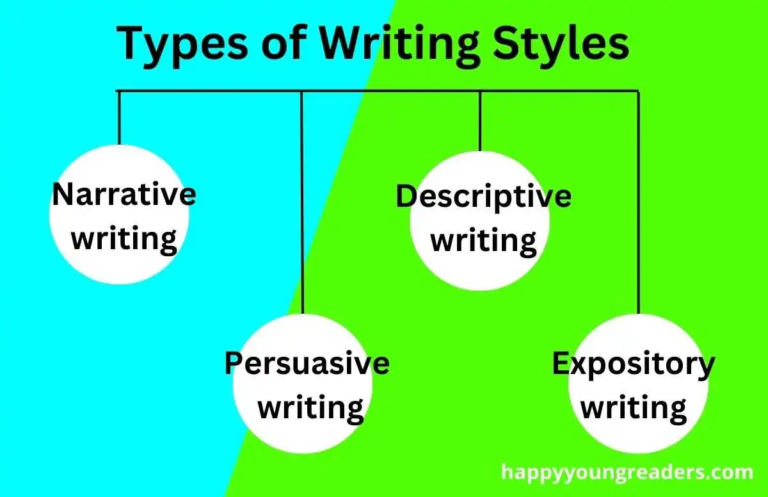
WRITING STYLE
Hello Writers,
We know that, as a writer, you face many challenges. You have to write regularly, search for unique ideas, look for inspiration, and try to find that one story you truly connect with. At the same time, you have an urge to share that story with your beloved readers!
But despite all these challenges, there is one very important task you must tackle: determining your writing style!
Most writers, at some point in their lives, encounter this question. Some manage to find their writing style, while others might not discover it even after penning the final letter of their last novel.
Scary, right? But this doesn’t mean they don’t have a writing style! Consciously or unconsciously, we all have a writing style, whether we’re writers or not. However, if you’re someone who wants to understand what a writing style is and how you can develop it to improve your craft, you’re on the right track! Today, we’re going to dive deep into writing styles and everything you need to know about them.
WRITING STYLE DEFINITION
Writing style is a unique way for an author to communicate with their readers using tone, voice, word choices, point of view, and more.
From this definition, we hope you now have a basic idea of what writing style means. But there’s more to it!
As a writer, you’ve likely written in different formats. Sometimes, you create a crisp, informative piece, while other times, you craft a fully detailed description of a place or event. Both are forms of writing, but have you ever wondered why they differ so much?
Here’s the answer: there are many different types of writing styles. By understanding these styles, you can discover which suits you best and in which format you excel.
TYPES OF WRITING : EXPLORING THE STYLES AND THEIR USES
1. Expository Writing
Expository writing is used to explain or inform. It is focused on delivering clear, factual information and is often structured logically to help readers understand a topic.
Characteristics:
Neutral and objective tone.
Provides facts, statistics, or instructions.
Avoids opinions or emotional language.
Examples:
Textbooks
News articles (non-editorial)
Instruction manuals
Scientific and technical reports
Purpose:
To educate or inform readers by presenting data and evidence in a straightforward manner. Expository writing is ideal when clarity and precision are essential.
2. Descriptive Writing
Descriptive writing paints a vivid picture in the reader’s mind by appealing to their senses. It often uses rich, detailed language to create an immersive experience.
Characteristics:
Uses imagery, metaphors, and similes.
Focuses on sensory details (sight, sound, smell, taste, touch).
Evokes emotion or atmosphere.
Examples:
Poetry
Nature writing
Descriptive passages in novels or short stories
Purpose:
To create a strong impression or mood, allowing readers to visualize and feel the scene or subject vividly. Descriptive writing often enhances creative works by adding depth and detail.
3. Persuasive Writing
Persuasive writing aims to convince readers to adopt a particular viewpoint, take action, or agree with an argument. This style often uses emotional appeals, logical reasoning, and rhetorical devices.
Characteristics:
Clear stance on a topic.
Uses evidence, logic, and emotional language to support arguments.
Addresses counterarguments to strengthen its position.
Examples:
Opinion pieces and editorials
Advertisements
Political speeches
Product reviews
Purpose:
To influence readers’ opinions or behaviours. Persuasive writing is often used in marketing, advocacy, and debate.
4. Narrative Writing
Narrative writing tells a story, whether real or fictional. It follows a structured format with a beginning, middle, and end, often focusing on characters, events, and conflict.
Characteristics:
Includes a plot, setting, and characters.
May use dialogue and a narrative voice.
Follows a clear sequence of events.
Examples:
Novels
Short stories
Biographies and autobiographies
Screenplays
Purpose:
To entertain, inspire, or convey a message through storytelling. Narrative writing allows readers to connect emotionally with the characters and events.
These are the main types of writing styles, but as time evolves, so does writing. We now need specific writing styles for certain tasks. Let’s explore some secondary writing styles derived from the main types.
1. Creative Writing
Creative writing blends various styles to emphasize imagination and originality. It often overlaps with descriptive and narrative writing but can also include experimental approaches.
Characteristics:
Focuses on artistic expression.
Encourages originality and creativity.
May use unconventional structures or formats.
Examples:
Poetry
Fiction and fantasy
Song lyrics
Playwriting
Purpose:
To explore ideas and emotions freely, often without strict adherence to conventional writing rules. Creative writing thrives on innovation and individual expression.
2. Technical Writing
Technical writing provides detailed instructions or information about specialized topics, often for a specific audience. It prioritizes clarity and precision.
Characteristics:
Uses specialized terminology.
Includes diagrams, charts, or visuals to aid understanding.
Focuses on functionality and accuracy.
Examples:
User manuals
Technical reports
Software documentation
Medical writing
Purpose:
To convey complex information in a way that’s accessible and useful to the intended audience. Technical writing is essential in industries like engineering, healthcare, and technology.
3. Academic Writing
Academic writing is formal and evidence-based, used in educational and research contexts. It aims to contribute to knowledge and foster critical thinking.
Characteristics:
Formal tone and structure.
Cites credible sources.
Focuses on argumentation and analysis.
Examples:
Research papers
Essays
Theses and dissertations
Academic journals
Purpose:
To present and analyze ideas, theories, or findings in a structured and scholarly manner. Academic writing is vital for advancing knowledge in various fields.
4. Journalistic Writing
Journalistic writing informs the public about news and current events. It values accuracy, timeliness, and clarity, with a focus on engaging the reader.
Characteristics:
Factual and concise.
Inverted pyramid structure (most important information first).
May include interviews or quotes.
Examples:
News articles
Feature stories
Investigative reports
Headlines and captions
Purpose:
To inform or entertain readers while maintaining journalistic integrity. Journalistic writing bridges the gap between information and audience engagement.
TIPS TO DEVELOP WRITING STYLE
BE AUTHENTIC : Don’t be afraid to reflect in your writing that who you are? What is your personality? What are your perspectives? Just be true to yourself!
READ WIDELY : A good writer is always a good reader! So don’t skip reading. Explore different writer’s writing, learn from them! It will surely help you to improve your writing craft! Basically it is the best way to learn!
WRITE REGULARLY : Practice makes a person perfect! To become better at your craft it is must that you have practice it daily! It will help you to track your growth, by writing daily you can analyse yourself and learn from your mistakes!
FOCUS ON CLARITY : Before delivering any piece of writing, make sure that you have a clarity about what you’re going to write, to whom you deliver your writing piece, just make the convection clear that will help you to write crisp and clear. By doing so, you can pass the exact message that you want to pass to your readers through your writing piece!
LEARN THE RULES : To become a great writer you have to master the language and to master the language you have to master the grammar! Yes, it’s all connected! So start learning the rules of grammar of the language you are writing in!
CONCLUSION
Each type of writing serves a purpose and uses different techniques. Understanding and mastering writing styles helps you connect with the right audience and achieve your goals. Whether you want to inform, persuade, entertain, or express yourself, the right writing style makes a big difference. Explore writing styles, try them out, and find what works best for your voice and goals.
We hope you found this article informative, if you learn more about writing so read these articles here!



